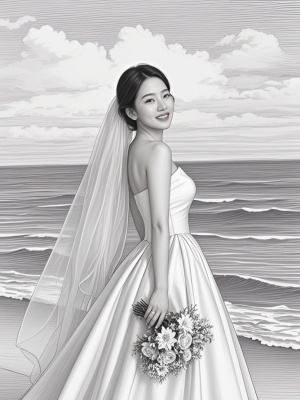The Art of 3D Pencil Sketch Drawing: A Comprehensive Guide
Introduction
3D pencil sketch drawing is a fascinating art form that creates the illusion of depth on a two-dimensional surface. This technique has gained immense popularity among artists and enthusiasts alike, as it allows for stunningly realistic representations of objects, people, and scenes. Whether you're a beginner looking to explore this art form or an experienced artist seeking to refine your skills, understanding the principles of 3D pencil sketch drawing is essential.
At its core, 3D pencil sketch drawing relies on shading, perspective, and optical illusions to trick the eye into perceiving depth. Artists often use techniques like anamorphosis, where the drawing appears distorted unless viewed from a specific angle, creating a dramatic 3D effect. For those interested in exploring digital alternatives, AI painting techniques can also achieve similar effects with different tools.
Essential Techniques for 3D Pencil Sketch Drawing
Mastering Shading and Light Source
The foundation of any convincing 3D pencil sketch lies in proper shading. Understanding how light interacts with objects is crucial for creating depth. Here are key shading techniques:
- Hatching and cross-hatching for texture
- Blending for smooth transitions
- Contrast manipulation to emphasize depth
- Highlight placement to indicate light sources
According to a study published in the Journal of Visual Arts Practice, proper shading can increase the perceived depth of a drawing by up to 40%. This makes it one of the most critical elements in 3D pencil sketch drawing.
Perspective and Proportion
Creating realistic 3D effects requires a solid understanding of perspective drawing. The main types include:
- One-point perspective for frontal views
- Two-point perspective for angular views
- Three-point perspective for dramatic angles
Artists often use vanishing points and horizon lines to maintain proper proportions. For those looking to combine traditional and digital techniques, AI art tools can assist in establishing perfect perspective grids.
Common Challenges and Solutions in 3D Pencil Sketch Drawing
Problem: Flat Appearance
Many beginners struggle with drawings that look flat despite their efforts. The solution lies in:
- Increasing contrast between light and dark areas
- Using reference objects to study real-world shadows
- Practicing gradual value transitions
Problem: Distorted Perspective
When objects appear warped or unnatural, try these fixes:
- Use grid methods to maintain proportions
- Step back frequently to check the overall composition
- Study basic geometric forms before complex subjects

For more advanced techniques, consider exploring professional galleries to analyze how master artists solve these problems.
Advanced 3D Pencil Sketch Techniques
Once you've mastered the basics, you can experiment with more advanced methods:
- Anamorphic illusions that interact with the environment
- Hyper-realistic textures like skin, fabric, or metal
- Incorporating mixed media for enhanced effects
- Creating interactive 3D sketches that viewers can engage with
These techniques often require specialized tools like blending stumps, kneaded erasers, and high-quality graphite pencils ranging from 9H to 9B hardness.
Conclusion
3D pencil sketch drawing is a rewarding art form that combines technical skill with creative vision. By mastering shading, perspective, and problem-solving techniques, artists can create stunning works that appear to leap off the page. Whether you prefer traditional pencil work or want to explore digital alternatives through AI-assisted art creation, the possibilities for creative expression are endless.
Remember that developing proficiency in 3D pencil sketch drawing takes time and practice. Start with simple objects, study real-world lighting, and gradually work your way up to more complex compositions. With dedication and the right techniques, you'll be creating breathtaking 3D illusions in no time.